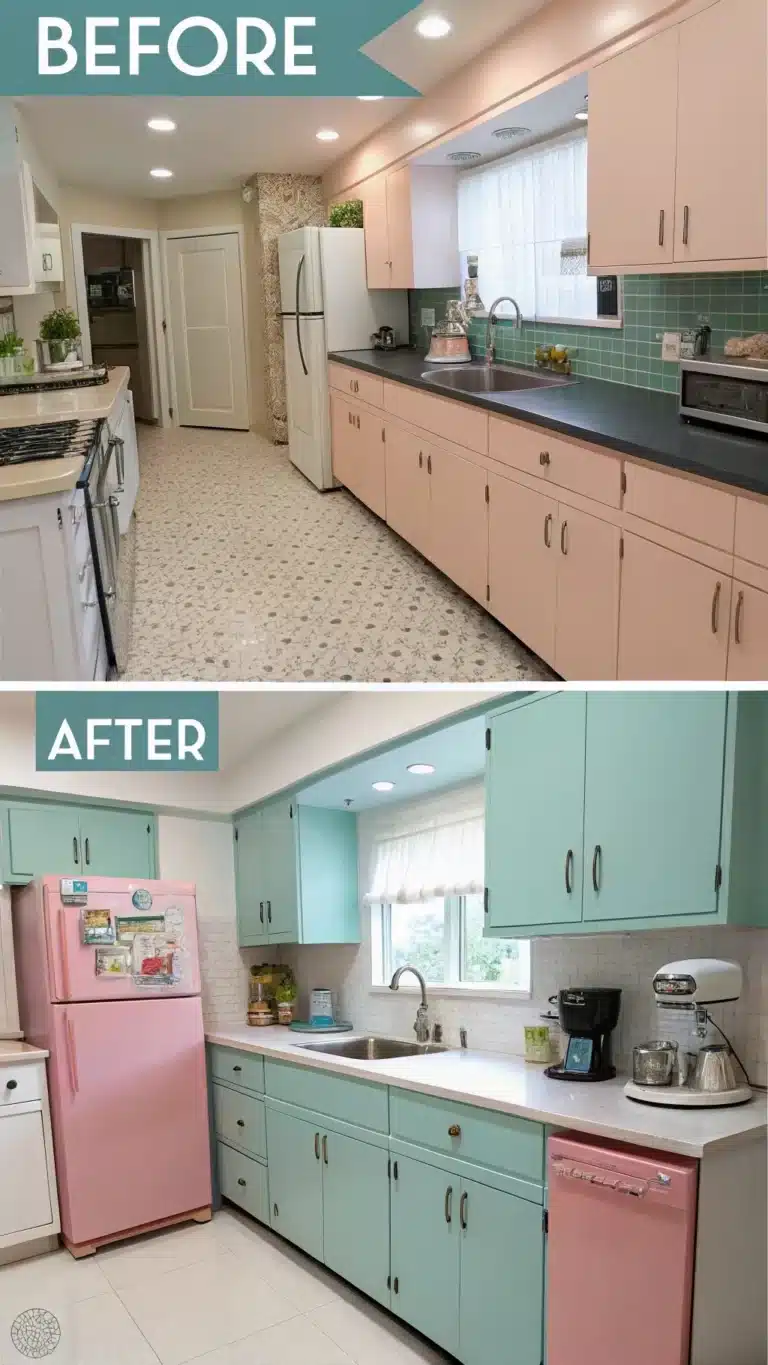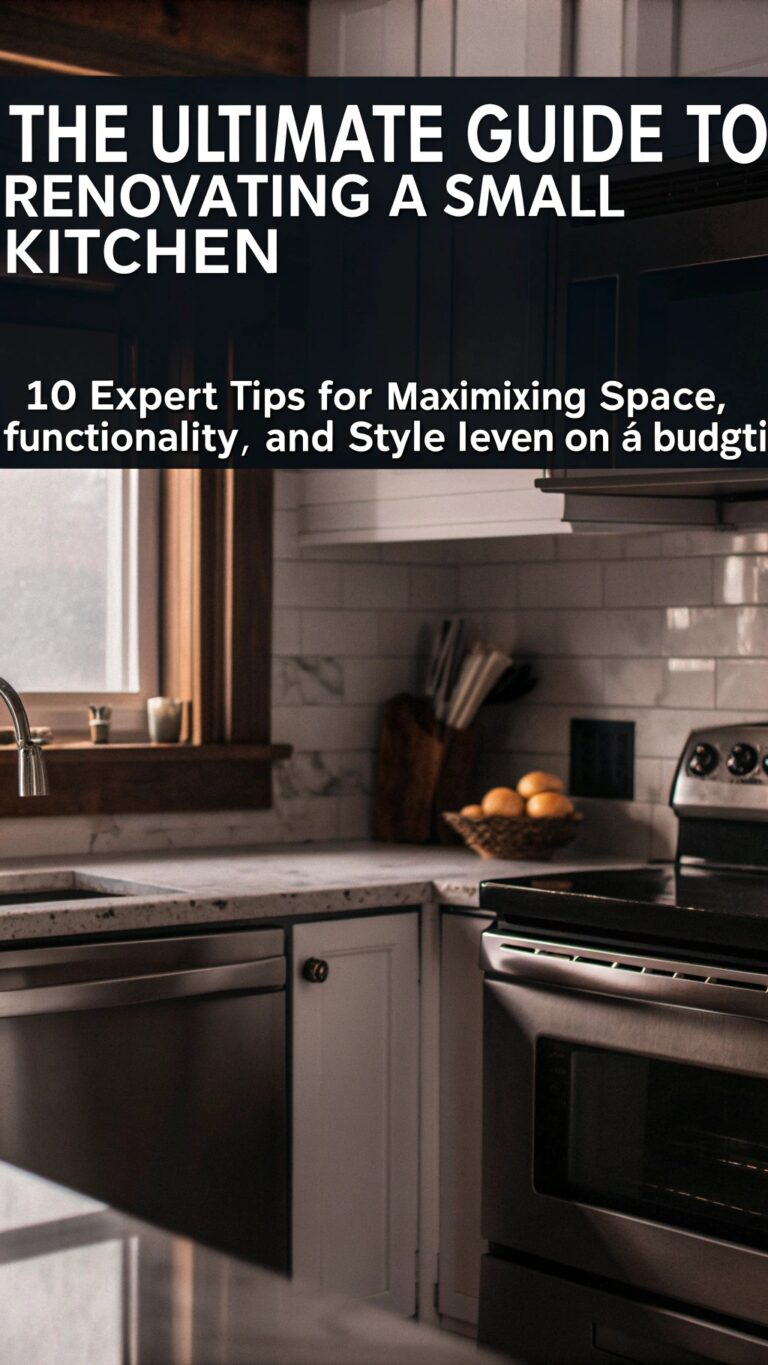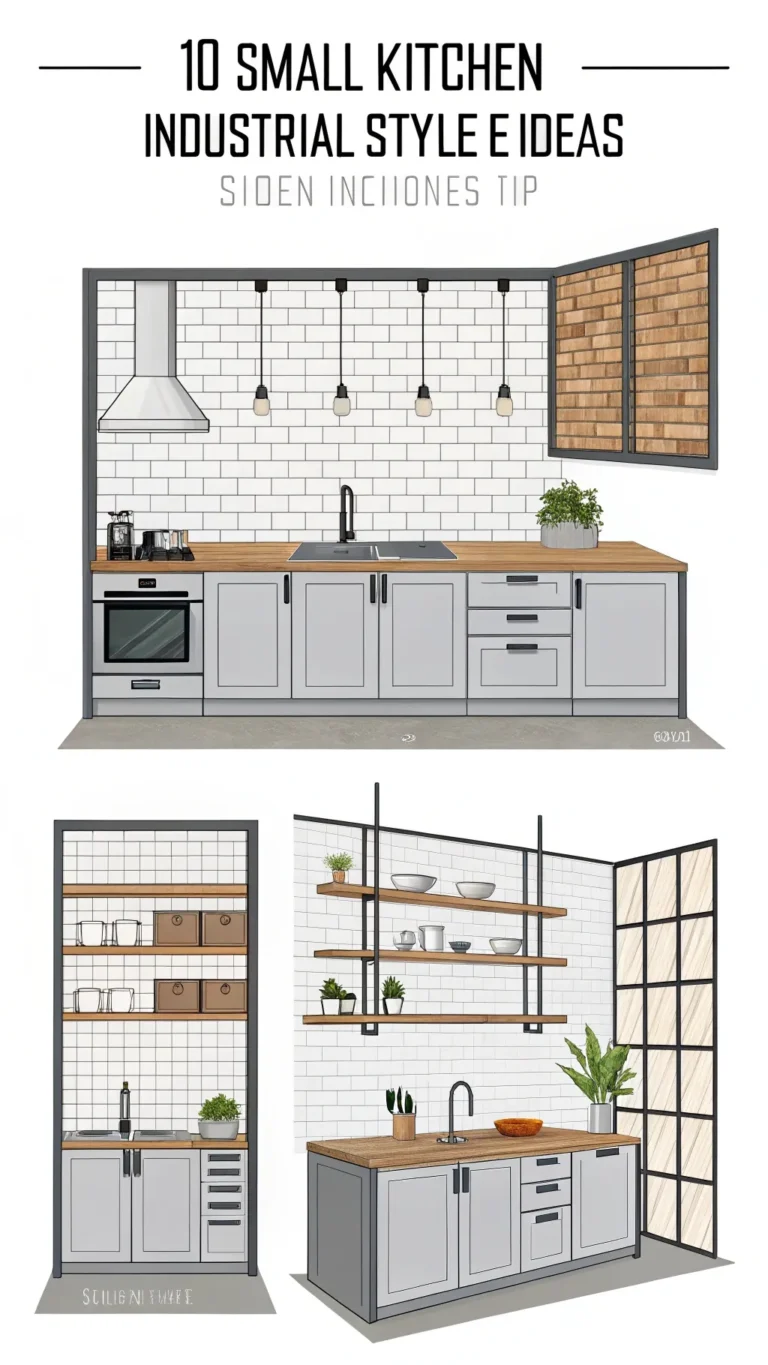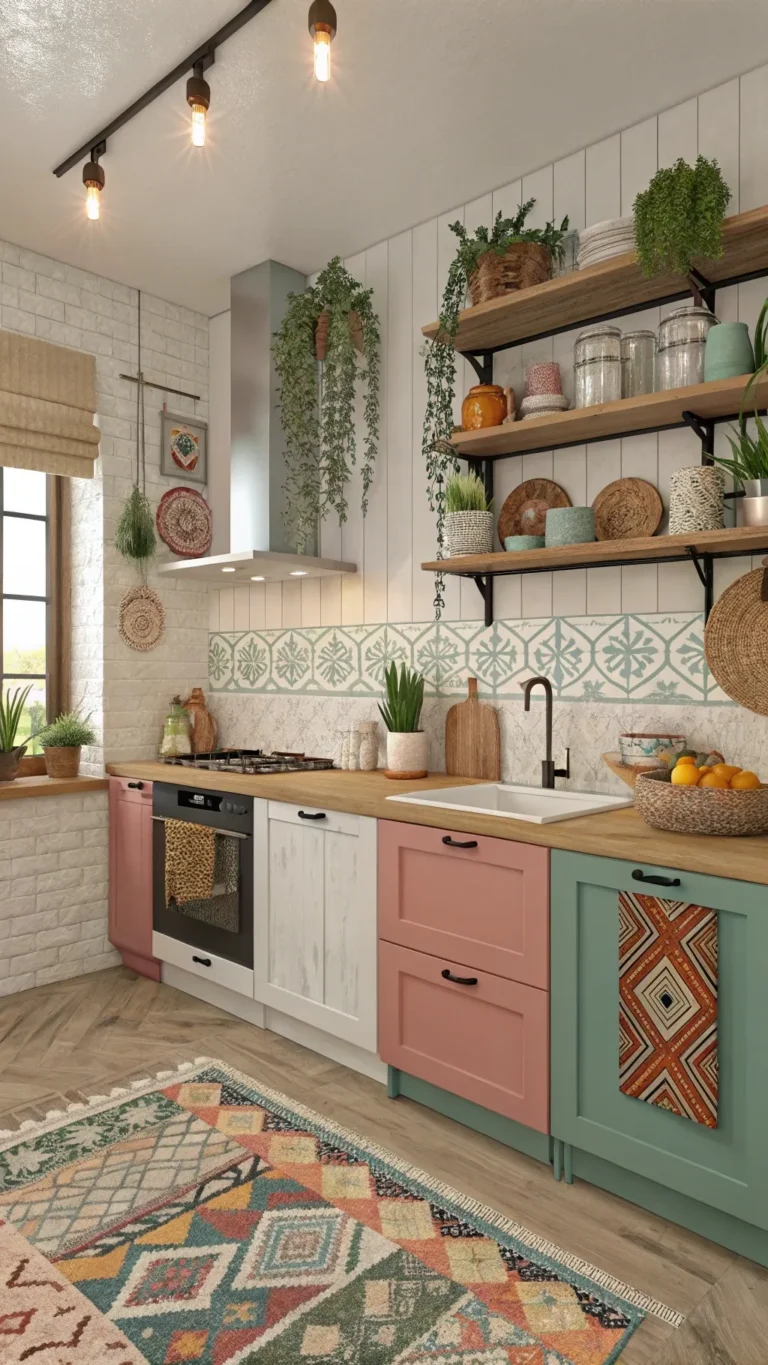Introduction
Small kitchens pose a unique challenge for families with young children. Space is tight, yet dangers hide everywhere. Sharp knives, hot stoves, cleaning chemicals – all within little hands’ reach. Kids are curious and quick; accidents can happen before you notice. Parents and caregivers must balance keeping the kitchen usable with making it safe.
This guide offers 10 essential small kitchen childproofing tips to create a secure space. These tips fit into compact layouts without sacrificing function. From locking cabinets to managing appliances, you’ll find practical ideas tailored for small kitchens.
Let’s explore ways to protect your little ones while keeping your kitchen efficient and organized.
1. Securing Cabinets & Drawers (Tips 1-3)
Cabinets and drawers often hold the most danger. Knives, heavy pots, and cleaning products lurk inside. Curious toddlers open them easily. Prevent injuries and poisonings by locking access and relocating hazards.
Tip 1: Use Child Proof Locks and Latches
Several lock types work well for small kitchens:
- Magnetic locks: Hidden inside cabinetry; require a magnetic key to open.
- Adhesive locks: Stick-on, no drilling needed—perfect for renters.
- Strap locks: Wrap externally around handles; easy to install but visible.
- Spring latches: Traditional locks that require pressing a latch to open.
Each type has pros and cons. Magnetic locks are neat but need keys kept away from kids. Adhesive locks avoid damage but may lose stickiness over time. Strap locks stand out visually yet are simple to use.
Installation tip: Clean surfaces before applying adhesive locks. Align properly for smooth closing.
A cabinet-by-cabinet check helps identify which type fits best.
Tip 2: Store Hazardous Items High and Locked Away
Cleaning products, medicines, lighters, knives — all dangerous if grabbed. Put them in high cabinets, locked if possible. Keep in mind that kids climb. Cabinets just out of reach don’t guarantee safety.
Install new locks on upper cabinets if needed. Use wall-mounted racks for lightweight hazardous items if space is tight.
Tip 3: Relocate Heavy and Breakable Items
Heavy pots, glass bowls, and appliances can hurt if pulled down. Move these to spots out of reach or into locked storage. If your kitchen lacks space, consider storing rarely used items elsewhere, like a pantry or closet.
Avoid stacking heavy items in low drawers. Store them higher or in sturdy containers.
Actionable Step: Check each drawer and cabinet for hazardous items. Relocate or lock as needed.
(Internal link suggestion: Check out our guide on Best Childproofing Products for Kitchens for selecting suitable locks and safety gear.)
2. Making Appliances Safe (Tips 4-6)
Appliances are essential but pose risks of burns and electric shocks. Keep little fingers safe from stoves, ovens, and small devices.
Tip 4: Secure the Stove and Oven
Kids can turn burners on or grab hot pots. Stove knob covers block knobs from small hands. Oven door locks prevent opening during cooking or cooling.
Stove guards create barriers in front of burners. Using back burners shifts heat away from edges, reducing risk.
Installation note: Most stove knob covers snap on or slide over knobs easily. Oven locks often screw in or use strong adhesive.
Tip 5: Lock the Refrigerator and Freezer
Fridge doors can hide choking hazards like ice cubes or small food items. Kids may climb to reach the top shelf. Use strap locks or magnetic locks on fridge and freezer doors.
Combination locks help with older toddlers who might figure out simpler locks.
Tip 6: Manage Small Appliances and Cords
Unplug kettles, toasters, and blenders after use. Leave cords short and out of reach with cord wrappers or holders.
Store small appliances on high shelves or inside locked cabinets if possible. For small kitchens, a dedicated high shelf can serve as safe storage.
Actionable Step: Create a checklist for appliance safety: knob covers, locks, unplugged cords.
(Internal link suggestion: Read about Small Kitchen Appliances with Child Safety Features.)
3. Addressing Sharp Edges & Breakables (Tips 7-9)
Small kitchens can feel cramped. Corners and edges become hazards for bumps and cuts. Sharp utensils and breakables need careful storage.
Tip 7: Install Corner Guards and Edge Bumpers
Focus on island corners, countertops, or tables near walkways.
Types include:
- Foam guards: Soft, cushioned, usually adhesive-backed.
- Rubber bumpers: Slightly firmer but protect against cuts.
- Clear plastic guards: Low visual impact, subtly blend in.
Choose guards that fit your kitchen style and don’t clutter space.
Tip: Apply guards firmly, especially in high-traffic zones.
Tip 8: Securely Store Knives and Sharp Utensils
Never leave knives or peelers out overnight or by the sink. Use locked knife blocks or magnetic strips mounted high on walls. Locked drawers with inserted organizers help keep sharp tools safe.
Remind family members to always return knives after cooking.
Tip 9: Keep Breakables and Hot Items Away from Edges
Heavy glassware and ceramics should sit on top shelves or locked storage. Avoid placing hot pots or liquids at counter edges. Always use back burners. Trivets and pot holders protect surfaces and hands.
A helpful tip: Walk through your kitchen at child’s eye level. Identify reachable items that could cause harm.
(Internal link suggestion: Explore Smart Storage Solutions for Small Kitchens to organize safer spaces.)
4. Safe Storage for Hazardous Items (Expanded from Tip 2)
Cleaning supplies, medicines, and trash can be toxic or dangerous. Secure these carefully, especially in small kitchen spaces.
Cleaning Supplies
Keep cleaner bottles high and locked. Areas under sinks often hold these but are easy for kids to access. Use heavy-duty locks installed with screws or bolts.
Consider storing some products outside the kitchen for added safety.
Eco-friendly and non-toxic cleaners reduce risk if accidental contact occurs.
Sprays and aerosols pose extra risks. Keep spray nozzles covered or locked.
Medicines & Vitamins
Medicines must stay high and locked, ideally outside the kitchen. If stored in the kitchen, secure cabinets tightly.
Trash Cans
Lock cabinets with trash cans inside or use bins with childproof lids. Batteries, sharp wrappers, and food waste inside trash can hurt children.
Electrical Outlets
Cover all low accessible outlets with plastic protectors. Arrange cords off the floor to avoid tripping and pulling hazards.
Regular inspection of outlets and cords keeps hazards low.
Actionable Step: List all hazardous items and plan secure storage. Clean out or relocate dangerous objects proactively.
(Internal link suggestion: Learn about Safe & Non-Toxic Cleaning Products to keep your kitchen healthy.)
5. Ensuring Floor Safety & Clear Pathways (Tip 10 & Other Hazards)
Slips and falls happen easily in small kitchens with busy feet. Clear floors and secure rugs help prevent accidents.
Tip 10: Maintain Clear Pathways
Remove clutter such as toys, bags, and pet bowls from floors. Avoid rugs with loose edges that trip children.
Establish rules to keep kitchen floors clear. Store items immediately after use.
Non-Slip Measures
Use rugs with non-slip backing near sinks and stoves. Clean spills promptly to prevent slipping. Keep a towel or cloth handy for quick cleanup.
Traffic Flow
Think of the “work triangle”—sink, stove, fridge. Limit child movement through this busy area during cooking times. Consider safety gates if layout allows.
Create a small safe-zone section for kids to play without risking burns or falls.
Sink and Water Safety
Empty sinks and buckets promptly. Standing water can be a drowning risk.
Use hot water tap guards to prevent burns if taps are within reach.
Other Low-Level Hazards
Watch for sharp furniture edges near the floor. Store heavy objects from low shelves out of reach or locked away.
Actionable Step: Map kitchen pathways and identify trip spots. Develop a “clean floor” habit everyone follows.
By following these 10 essential small kitchen childproofing tips, your kitchen can become a safer place for your children without losing its function or style. Safety requires ongoing attention but pays off with peace of mind. Begin your kitchen safety check today.
Experts Say: Dr. Karen Smith, a child safety specialist, states, “Simple measures in kitchen safety reduce childhood injury rates by almost 40%.” A 2024 study from Safe Kids Worldwide supports this, showing that locked cabinets and stove guards cut kitchen accidents substantially.
Safety works best when prevention aligns with everyday habits. Make the small changes that protect your family every day.
Meta Title: 10 Small Kitchen Childproofing Tips: Essential Safety Guide (2025)
Meta Description: Make your small kitchen safe for kids! Get 10 essential childproofing tips covering cabinets, appliances, storage, and more. Practical ideas for limited kitchen space in 2025.
URL Slug: /small-kitchen-childproofing-tips
Remember the wise words by Benjamin Franklin: “An ounce of prevention is worth a pound of cure.” Protect your kitchen, protect your kids.






